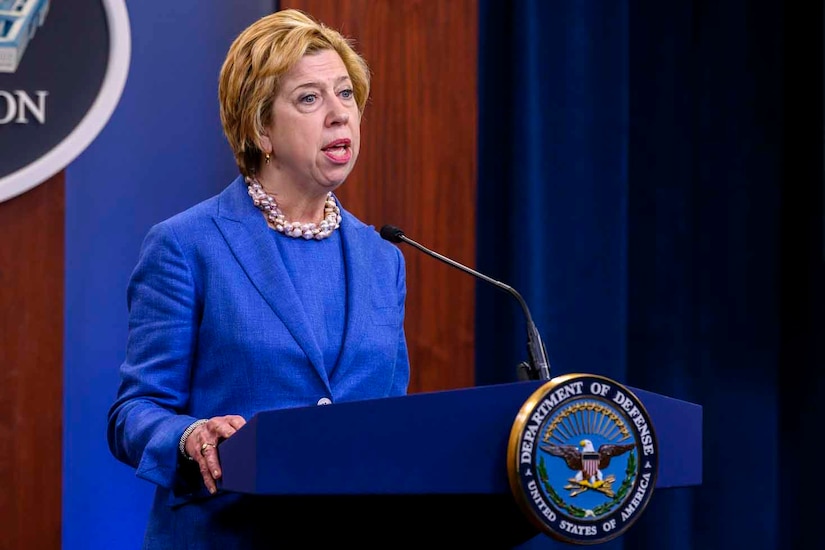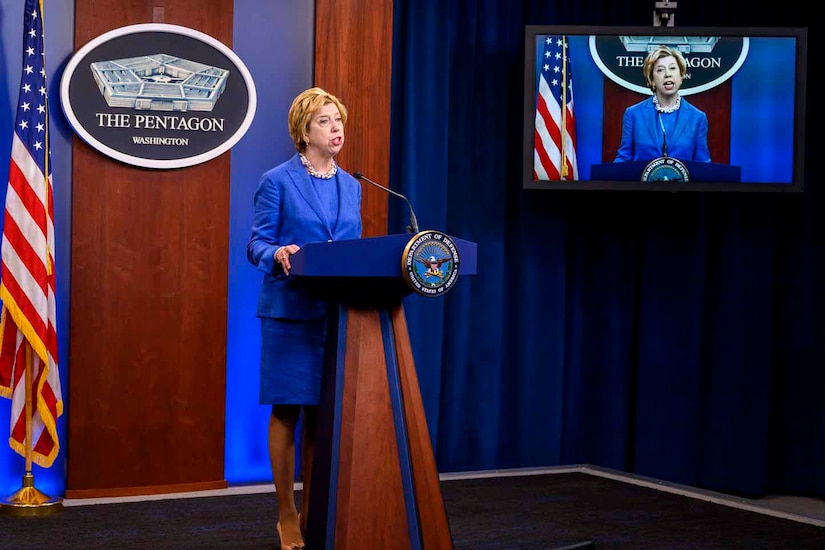Nov. 10, 2020 | , DOD News
Under Secretary of Defense for Acquisition and Sustainment Ellen M. Lord, spoke today about the future 5G network technology remotely from the Pentagon to the MITRE Corporation.

5G will transform the way the military operates, she said, noting that it supports fires, command and control, intelligence, movement and maneuver, protection, sustainment and information.
"Tomorrow's warfighters will use local and expeditionary 5G networks to move massive amounts of data to connect distant sensors and weapons into a dense, resilient battlefield network. This massive amount of data is a key to unlocking further technological gains in the form of artificial intelligence and machine learning, as well as unmanned and autonomous weapons systems across all domains," she said.
The deployment of 5G will also enable a new generation of the knowledge economy, increasing productivity, growing new businesses and spurring innovation, Lord said.
The technology is vital to maintaining America's military and economic advantage and the DOD is heavily invested in 5G to test and demonstrate various applications and use of these emerging technologies to support the National Defense Strategy, she said.
The department's focus on 5G, Lord said, involves large-scale experimentation and prototyping. Currently, five installations will be used as a 5G test-bed.

Trusted 5G communications systems require secure software, firmware and hardware as well as reliable microelectronic technology. These require a closer working relationship with both traditional defense sector partners and non-traditional partners in sectors such as telecommunications, she said. The commercial and government sectors are working together to establish processes and standards that will ensure the security of all three areas.
It is also critical to re-shore the microelectronics industrial base, used in the manufacture of communications equipment, Lord said, meaning bringing manufacturing back to the U.S.
Current microelectronics and telecommunications manufacturing is being done largely overseas, mostly in Asia, she said.
That puts U.S. national security at risk, she said. For instance, the Chinese could install backdoors and malicious code into the electronics. Also, overseas manufacturing means a loss of employment opportunities and economic growth here in the U.S. The department is hoping to change that, she said, adding that "the U.S. must lead in 5G development."






No comments:
Post a Comment